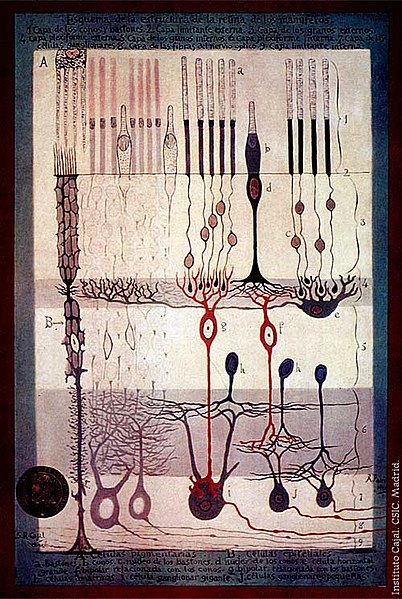The visual system is the physiological basis of visual perception. The system detects, transduces and interprets information concerning light within the visible range to construct an image and build a mental model of the surrounding environment. The visual system is associated with the eye and functionally divided into the optical system and the neural system.
The eye is the sensory organ of the visual system. The iris, pupil, and sclera are visible
Representation of optic pathways from each of the 4 quadrants of view for both eyes simultaneously
S. Ramón y Cajal, Structure of the Mammalian Retina, 1900
Information flow from the eyes (top), crossing at the optic chiasma, joining left and right eye information in the optic tract, and layering left and right visual stimuli in the lateral geniculate nucleus. V1 in red at bottom of image. (1543 image from Andreas Vesalius' Fabrica)
Visual perception is the ability to interpret the surrounding environment through photopic vision, color vision, scotopic vision, and mesopic vision, using light in the visible spectrum reflected by objects in the environment. This is different from visual acuity, which refers to how clearly a person sees. A person can have problems with visual perceptual processing even if they have 20/20 vision.
Leonardo da Vinci: The eye has a central line and everything that reaches the eye through this central line can be seen distinctly.
Eye movement first 2 seconds (Yarbus, 1967)






